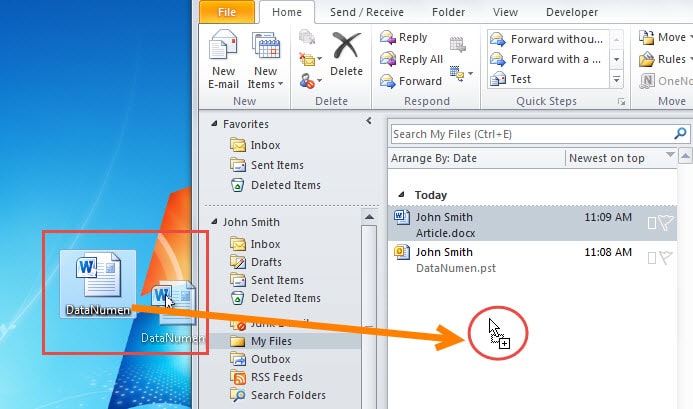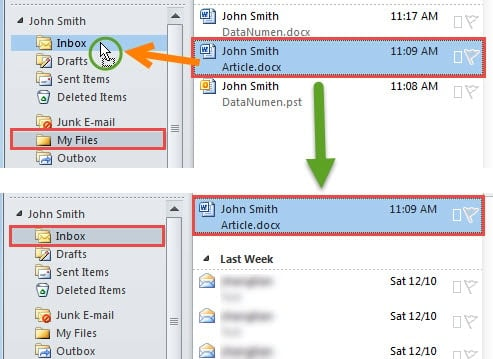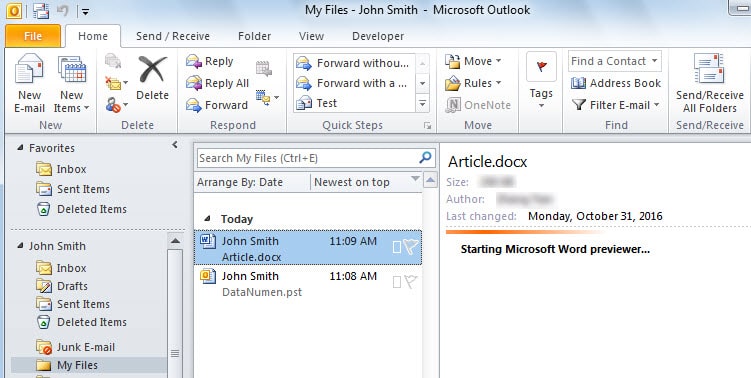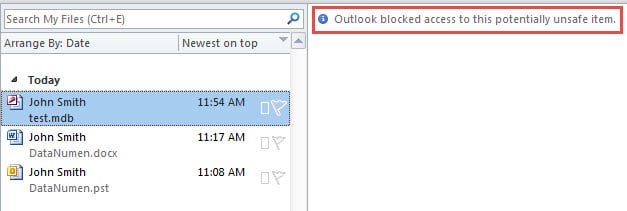Do you know that Outlook can serve as a file storage location? You can easily drag and drop files to the mail folder. They will be stored in Outlook mailbox. If you intend to use this feature, you should follow the 4 tips mentioned in this article.
To move and store files in your Outlook mailbox, you can straightly drag and drop the files to one mail folder, like the following screenshot:
If you are using an Exchange account or IMAP account in Outlook, storing files in Outlook mailbox must be a great feature. It is because that the files can be synced. So when you access your mailbox on other devices, you can get these files readily. But to be honest, Outlook is not a file system. So if not necessary, you had better store files on local disks. If you decide to use it, you have to adhere to the 4 tricks introduced below:
1. Don’t Drag and Drop to Inbox Folder Directly
Firstly, you shouldn’t drag and drop the files to your Inbox folder in the mailbox. It will bring out a new message with the files as email attachments rather than saving the files in Inbox folder. If you still hope to store the files in Inbox, you can firstly drag and drop them to other mail folder and next move them to the Inbox.
2. Don’t Store the Files beyond the Attachment Size Limit
As you know, when you append attachment that is too large, you will receive an alert, which tells you that its size exceeds the allowable limit. In fact, the message or attachment size limit is the same true for the files. You can still store it in mail folder, but it won’t be synced. Moreover, the large files will lead to your Outlook send/receive errors.
3. Pay Attention to the First File Size
If the file is the first item in a mail folder, or the folder is just dedicated for storing files, upon you access the folder, the first file will be shown automatically in the reading pane. In this case, provided the first file size is large, it will be difficult to load and then Outlook will hang to start the previewer. Plus, assuming that the files are saved in a non-cached folder, Outlook will have to download the files every time. In this situation, if you are working on a slow remote connection, you will need to wait a long time for the file to get downloaded.
4. Unblock Specific Types of Files
Outlook will automatically block specific types of email attachments. This equally applies to the files stored in your mailbox. When you try to preview it in reading pane, you will see an alert, like the following image. If you indeed desire to view the files, you have to unblock the specific types of attachments. For detailed steps, you can refer to our previous article “What to Do If Outlook Blocks Your Email Attachments?”
Keep Outlook Mailbox in Small Size
Outlook is susceptible to corruptions when your mailbox is oversized. Thus, you should always keep your mailbox in small size. For example, you can use Outlook AutoArchive to remove the old items, remove the attachments from Outlook and so on. Supposing that your Outlook still gets damaged, you can easily repair corrupt PST data by an experienced repair tool, like DataNumen Outlook Repair.
Author Introduction:
Shirley Zhang is a data recovery expert in DataNumen, Inc., which is the world leader in data recovery technologies, including repair SQL database damage and outlook repair software products. For more information visit www.datanumen.com



